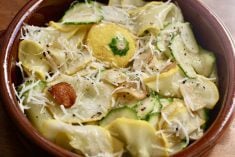Our summer holiday took us to Wisconsin. We met our Danish cousins for the first time. A bit was learned about how Grandpa and Grandma met, why they came to Canada and why most of the family is still in Wisconsin.
On our way home, while driving through Iowa, we couldn’t help but stop at Elk Horn. It was listed in the tourist information as a Danish village, featuring an immigrant museum, a windmill brought from Denmark in pieces and reassembled, gift shops and, of course, Danish food.
Read Also

Farm auctions evolve with the times
Times have changed. The number of live, on-farm auctions is seeing a drastic decline in recent years. Today’s younger farmers may actually never experience going to one.
Our Danish food experience was at a little restaurant in a restored train depot. I had sm¿rrebr¿d, which the menu said is the signature item in a Danish kitchen. It is an open-faced sandwich that is always eaten with a knife and fork. Literally translated, sm¿rrebr¿d means buttered bread. It is a sandwich that is artistically created, not simply made.
It was an attractive sandwich with a slice of buttered bread on the bottom and topped with layers of tomato, peppers, cheese and three rolls of thinly sliced cold meat. Grated cheese and olives provided the garnish. Any of our favorite sandwich ingredients could be served in this way. It’s a delightful way to create a sandwich.
At the museum I purchased the cookbook, From Danish Kitchens compiled by St. John Lutheran Church. It is available by writing to The Church Office, 5515 Phinney Ave., Seattle, Washington 98103. Ideas for sm¿rrebr¿d are included. Cost is $12.95 U.S.
A plentiful treat
Chokecherries grow in the wild and are a wonderful tree, providing shelter and fruit for people and wildlife. We have an outside row of chokecherries as part of our shelterbelt. Planted in 1985, it survived the drought without being watered.
The tree nursery at Indian Head, Sask. provides chokecherries as one of its farm shelterbelt trees, free of charge. They are recommended for all the growing zones on the Prairies except one and for that area it is considered satisfactory.
For more information on obtaining and growing chokecherries, contact the PFRA Tree Nursery, Indian Head, Sask. S0G 2K0, 306-695-2284 or your local extension agrologist.
All members of the family can enjoy picking chokecherries as they are easily picked, growing in clusters on lower and upper branches. The fruit can be reached by children or those unable to stand if a lawn chair or wheelchair is used. It was a joy for my mother-in-law, with limited sight and strength, to be able to sit and pick.
The fruit can be made into jelly, liqueur, wine, vinegar, syrup or as a flavoring in frostings and other recipes. For making jelly, follow the instructions on a commercial pectin package, for example Certo. The following recipes are favorites at our house.
Chokecherry syrup
First get the juice:
10 cups 2.5 L
chokecherries
5 cups water 1.25L
Place the fruit in a saucepan, add water, bring to a boiling point and simmer gently until fruit is tender. Crush fruit with a potato masher. Drain through a moistened jelly bag.
4 cups 1 L
chokecherry juice
6 1Ú2 cups sugar 1.67 L
2 cups corn syrup 500 mL
Place all together in a saucepan and bring to a hard rolling boil, stirring constantly. Simmer five minutes. Remove from heat. Pour into hot sterilized jars. Yield: 8 cups (2 L).
Use on pancakes or ice cream. Baste ducks or other poultry with 1Ú2 cup (125 mL) before roasting.
Source: Saskatchewan Sportsman’s Gourmet Guide by Henrietta Goplen. Produced by Saskatchewan Centennial Corporation.
Chokecherry frosting
1Ú2 cup 125 mL
chokecherry jelly
1 egg white 1
dash of salt
Put jelly in top of double boiler and place over hot water. Add egg white, salt and beat about five minutes or until the jelly disappears. Remove from heat and continue beating until frosting stands in stiff peaks. Spread on cake.
Yield: Enough to frost one layer cake.
Chokecherry liqueur
I clipped the following chokecherry liqueur recipe from the August 1992 issue of the Saskatoon StarPhoenix. Every year I make more.
2 cups well-ripened 500 mL
chokecherries
3Ú4 cup granulated 175 mL
sugar
13 ounces dry gin or 375 mL
vodka
Sort and wash chokecherries. Place cleaned chokecherries in a bottle with a tight fitting lid. Add sugar and gin or vodka.
Let stand one month in a warm dark location, tipping bottle daily until sugar dissolves.
Allow to stand one more month. Strain well. Serve.
A liquor bottle with four flat sides works well. Lay the bottle on its side and turn to a new side each day.
Chokecherry vinegar
Mash clean, ripe chokecherries. Mix white vinegar and water in equal proportions and cover berries with it.
Let stand for two days, stirring occasionally. Pour through a cloth bag. Add 1 cup (250 mL) sugar to each cup of juice. Bring to a boil and boil for a few minutes. Seal in jars.
Saskatoons, raspberries or cherries can also be used.
To serve:
- As a thirst quenching drink: Use approximately 2 tablespoons (30 mL) in one glass of water or ginger ale.
- As a tasty marinade: Use to enhance the flavor of meat marinades and barbecue sauces.
- As a fresh fruit dressing: Combine 1Ú2 cup (125 mL) light sour cream, 2 tablespoons (25 mL) fruit vinegar and 2 tablespoons (25 mL) honey; stir until well blended. Serve over fruit salad.
- As iced tea: Combine 4 cups (1 L) freshly brewed, double strength tea, 1Ú3 cup (75 mL) fruit vinegar. Sweeten to taste and serve over ice.
Enjoy the unique flavor of chokecherries with your family or give it as gifts so others can also enjoy.
Horseradish jelly
Dear TEAM: Enclosed is my recipe for horseradish jelly. It is an excellent companion to meat and chicken. My son-in-law loves it on his toast. – J.A., Red Deer County, Alta.
Horseradish jelly
1 cup chopped 250 mL
peeled fresh horseradish
1 cup white vinegar 250 mL
3 1Ú2 cups white sugar 875 mL
1Ú8 teaspoon turmeric 0.5 mL
1Ú2 teaspoon salt 2 mL
3 ounce pouch liquid 85 g
pectin
Grind horseradish fine with vinegar. (Food processor recommended – not so hard on the eye.) Stir together with sugar, turmeric and salt. Let stand 15 minutes.
Bring to boil over low heat. Increase heat and cook to full rolling boil, stirring constantly.
Add pectin, stirring and boil for one minute.
Remove from heat and skim. Pour into sterilized jars and seal. Makes four half-pints. Takes about 24 hours to set.
Cut-off jeans valance
A restaurant we recently visited had cut-off jeans made into window valances.
This idea might be a quick window treatment for a western theme or for students returning to college.
Cut the jeans in half at the side seams.
Finish the cut edge to prevent unraveling and to give a finished look or sew several fronts together and several backs together.
One restaurant window had all backs and one all fronts, however, fronts and backs could both be on one window.
Feed a curtain rod through the back side of the waistband and hang. Red western style handkerchiefs were threaded through the belt loops to trim the top.














